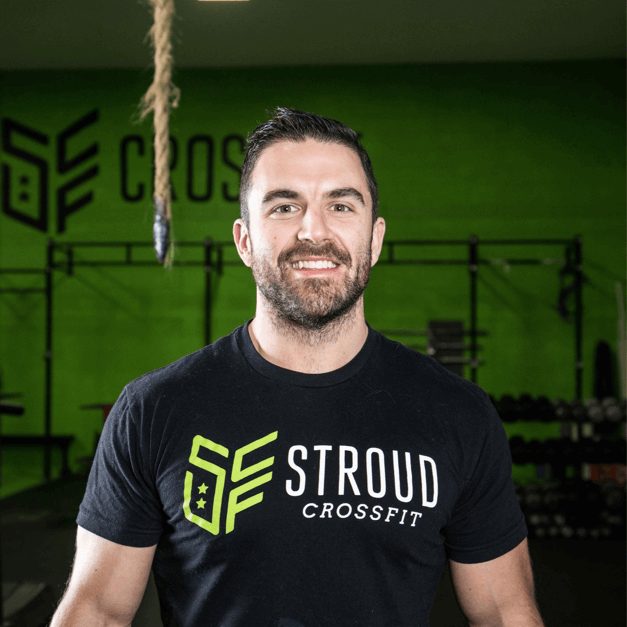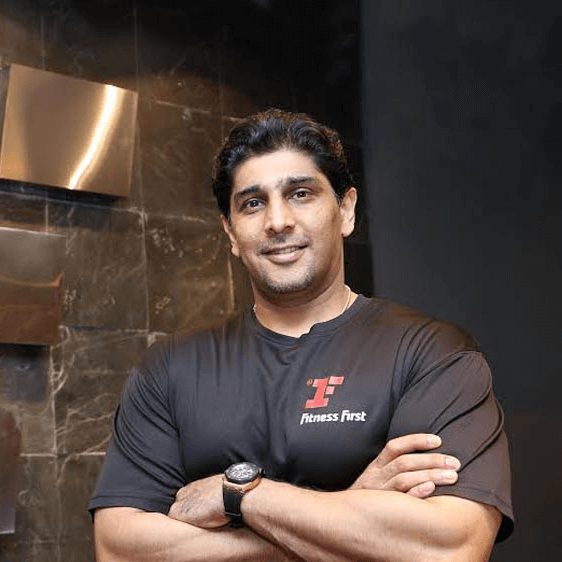Custom Weightlifting Belt – Definitive FAQ Guide
A custom weightlifting belt is a popular piece of equipment. It is available in almost every commercial gym. If you have plans to buy custom weightlifting belts wholesale, this FAQ guide can be quite helpful.
It will assist you while making a wise decision regarding the selection of a suitable belt.
So, let’s start this guide without any further delay!
Table of Contents
- What is a custom weightlifting belt?
- What types of custom weightlifting belts are available on the market?
- What materials are used in making a custom weightlifting belt?
- How wide a Custom Weightlifting Belt is?
- How thick a custom weightlifting belt is?
- What are the options for customizing a wholesale weightlifting belt?
- What are the benefits of using a custom weightlifting belt?
- Is there any difference between the custom powerlifting and bodybuilding weightlifting belts?
- How does the locking mechanism of a custom weightlifting belt work?
- What are the types of IPF rules / specifications for a custom weightlifting belt?
- Final Words
What is a custom weightlifting belt?
A weightlifting belt is a strap that weightlifters wrap around their waist. When lifting heavy weights, this belt provides sufficient support to the spine.
A custom weightlifting belt consists of the following parts:
- Buckle
- Strap
- Belt loops
The weightlifting belt has more than one name. The most popular ones include:
- Lever weightlifting belt
- Powerlifting belt
- Lifting belt

Figure 1: Custom weightlifting belts
What types of custom weightlifting belts are available on the market?
When it comes to the classification of a weightlifting belt, there are four major types. These are:
- Bodybuilding belts
- Powerlifting belts
- Velcro belts
- Dipping belts
Bodybuilding Belt
This belt is a combination of powerlifting and velcro belts. Also known as a weightlifting belt, it is a popular option among bodybuilders. A bodybuilding belt is usually made of leather.
As compared to velcro belts, it applies some extra pressure to the abdomen. This kind of belt is thinner on the inside while thicker on the outside.
For a much better and secure fit, the bodybuilding belt comes with two prongs.

Figure 2: A custom Olympic weightlifting belt
Powerlifting Belt
As the name suggests, this kind of belt is a common choice for powerlifters. A belt like this is sturdier than other available options. Hence, it provides the required support and applies maximum pressure to the abdomen.
Another unique feature of this belt is its uniform width. This makes it possible to cover the maximum area around the abdomen.

Figure 3: A custom lever powerlifting belt
Velcro Belt
This belt is less sturdy, as it is made of Velcro. Due to this, the pressure applied on abdominal is comparatively low. Hence, it is a viable choice for recreational or amateur lifting.

Figure 4: A custom Velcro weightlifting belt
Dipping Belt
This kind of belt is quite different in terms of its appearance. The most noticeable difference is the attachment of a chain to the front. A dipping belt may consist of original leather or artificial material i.e. neoprene.
Manufacturers use heavy-duty carabiners to connect belts with chains. This chain allows attaching a weight plate with the belt. It helps to enhance the intensity of workout while doing chin-ups, pull-ups, or bench presses.
The weight-bearing capacity of a good quality dip belt can go up to 200 pounds. The uniform dimensions of this belt offer necessary support. It helps with the even weight distribution.

Figure 5: A custom dipping belt with a weight plate
What materials are used in making a custom weightlifting belt?
Custom weightlifting belts are generally made of two types of materials. These include:
- Leather
- Nylon
Leather
There are two types of leather used for making custom weightlifting belts. These include:
- Suede leather
- Top-grain leather
Leather is a strong material, which makes it a suitable for weightlifting belts. The durability level of suede leather is low. Especially, when compared with top-grain leather.
Leather offers desired rigidity and strength to a custom weightlifting belt.

Figure 6: Leather custom weightlifting belts of different sizes
Nylon Weightlifting Belts
These belts are made of nylon, which is a cheaper material. Hence, Nylon weightlifting belts are the most common option. Besides, these belts are versatile and affordable.
In fact, nylon is a common material for almost any kind of weightlifting belt. However, nylon doesn’t stretch too much. These belts are lightweight, comfortable, and user-friendly.

Figure 7: A nylon custom weightlifting belt
How wide a Custom Weightlifting Belt is?
The width of a custom weightlifting belt depends on the type of lifting. For instance, the width of a powerlifting belt must be in line with the IPF rules.
IPF is an abbreviation for “International Powerlifting Federation”. In order to comply with the rule of the IPF, the thickness of weightlifting belts must not exceed 4-inches.
These rules are not applicable to the belts used by amateur lifters or gym enthusiasts. Usually, bodybuilding belts have narrow edges at the front.
How thick a custom weightlifting belt is?
When it comes to the thickness of a custom weightlifting belt, it ranges between 10 – 13 mm. In addition, the thickness may vary depending on the type of lift.
For example, a powerlifting belt is relatively thicker than regular weightlifting belts. The additional thickness of the belt provides extended comfort and support.
Furthermore, weightlifting belts with extra thickness are more durable and comfortable. These belts offer maximum support to the back. Hence, lifters can perform their workout while maintaining a safe posture.
On the contrary, thinner weightlifting belts wear out easily. Besides, these belts don’t offer sufficient support.
What are the options for customizing a wholesale weightlifting belt?
Following are the features that you can customize:
- Material
- Style
- Thickness
- Size
- Buckle
- Prongs
- Type of closure mechanism
- Logo
- Logo design
- Color
Material
The common materials used for manufacturing a custom weightlifting belt are:
- Suede leather
- Top-grain leather
- Nylon
These materials have their pros or cons. So, choose the most suitable material for your weightlifting belt.
Style
You can choose between two basic styles when buying weightlifting belts. The most popular style has a wider back. However, the width of a custom powerlifting belt is similar on both the back and front sides.
Thickness
Depending on the type of lift, the thickness of custom weightlifting belts may vary.
Size
It is one of the most essential aspects to consider. A weightlifting belt can only work efficiently if it fits properly. For this purpose, make sure to rely on weightlifting belts of appropriate size.
A wide range of manufacturers provides weightlifting belts in different sizes. In addition, it is also possible to adjust the size of a weightlifting belt to some extent.
Buckle
This one is the key part of a custom weightlifting belt. Usually, the buckle faces most of the stress when you are lifting the weights. Hence, it must be made of strong and durable materials.
Top-rated manufacturers use stainless steel buckles for maximum strength and safety. It also enhances the overall lifespan of the belt.

Figure 8: Single prong buckle of a custom weightlifting belt
Prongs
The prongs of a buckle look identical to the prongs we normally see in a fork. These prongs pass through the holes in the belt and securely attach it to the abdomen.
The number of prongs varies depending on the type of weightlifting belt. However, attaching two prongs to a buckle is common practice.
Type of closure mechanism
You can choose a customized closure system for your weightlifting belt. Here, are some of the options:
- Buckle closure
- Quick-release closure
- Lever closure
Logo
Among other customization options, you can order the placement of a brand name or logo on the belt. It will assist you while growing your brand’s popularity.
Logo design
Yanre Fitness offers a wide range of options when it comes to designing a specific logo. These customization options include:
- Embossed
- Embroidered
- Raised
- Painted
- Printed
Color
Talking about the color of a custom weightlifting belt, the choices are numerous. Hence, you can go for the color of your choice. Nylon weightlifting belts are available in almost any color.

Figure 9: A double-prong, leather weightlifting belt
What are the benefits of using a custom weightlifting belt?
Using a custom weightlifting belt is beneficial in many ways. Listed here are a few of them:
- Helps to increase abdominal pressure
- Avoids the issue of hyperextension
- Provides required support to the spine
- Allows the spine to move in a restricted range
- Makes it possible to lift heavy weights
- Minimizes the stress felt by lower spine
- Improves the posture
- Comfortable to wear
Helps to increase abdominal pressure
By wearing a weightlifting belt, you actually compress and squeeze the abdominal muscles. This applies additional pressure to the abdomen.
Such increase in abdominal pressure helps to cushion the front area of the spine. As a result, your spine will feel less stress when you lift heavy weights.

Figure 10: Core muscles being compressed by a custom weightlifting belt
Avoids the issue of hyperextension
There is a limit to the extension of every muscle in our body. Hence, the extension of a muscle beyond such limit might cause injury or tearing.
Weightlifters prevent this from happening by using a custom weightlifting belt. Use of such a belt is highly recommended when lifting heavy and overhead weights.
Provides required support to the spine
The use of a weightlifting belt ensures extensive support to the spine. Besides, it also helps to stabilize the spine when lifting and dropping heavy weights.

Figure 11: A weightlifting belt raises the abdominal pressure & cushions the spine
Allows the spine to move in a restricted range
The limited range of motion of the spine prevents its dislocation. Hence, wearing a weightlifting belt reduces the chances of spinal injuries.
Makes it possible to lift heavy weights
It helps to improve your weightlifting capacity. A weightlifting belt allows lifting heavy weights by maintaining a safe positioning.
Minimizes the stress felt by lower spine
The support offered by the weightlifting belt helps to lower the stress felt by your spine. It also prevents accidental injuries to the back muscles.
Improves the posture
Besides offering required support, a weightlifting belt helps to maintain proper posture. For instance, keeping the shoulders straight assists a lifter while lifting heavy weight.
Comfortable to Wear
Normally, all types of weightlifting belts are comfortable to wear. It also provides a sense of security to the lifter.
Is there any difference between the custom powerlifting and bodybuilding weightlifting belts?
Although both these belts look identical, there are a few minor differences.
| CUSTOM BODYBUILDING BELT | CUSTOM POWERLIFTING BELT |
| Used for Functional Training training and Olympic lifting Suitable for clean, jerks, and snatches Back is 4-inches wide Reduced width and thickness at the front side | Used for powerlifting Ideal option for deadlifts and squats 4-inches width at back and front Similar width on back and front side |

Figure 12: custom weightlifting belt

Figure 13: A suede, powerlifting belt
How does the locking mechanism of a custom weightlifting belt work?
Generally, manufacturers offer three kinds of locking systems for a custom weightlifting belt:
- Buckle closure
- Lever closure
- Quick-release closure
Buckle Closure
This one is the most usual type of closure mechanism. A buckle may contain one or two prongs. You can easily change the size of a belt with the help of the holes located on the belt.

Figure 14: A buckle with double prongs.
Lever Closure
This type of closure mechanism is more durable, as it is made of steel. It is user-friendly and looks amazing. A lever closure is secure too.

Figure 15: A custom lever weightlifting belt
However, you need to remove the level closure system and re-insert it to change the belt size.
Quick-release Closure
This closure mechanism has two designs:
- Built-in prong design
- Rolling buckle design
The built-in prong design is easy and secure closure mechanism. On the contrary, a rolling buckle design offers a quick-locking mechanism.

Figure 16: A Built-in prongs design

Figure 17: A Rolling buckle design
What are the types of IPF rules / specifications for a custom weightlifting belt?
The specification of powerlifting belt must be in line with the IPF standards.
Below are the most prominent IPF specifications:
Materials: Vinyl, leather, etc.
Stitching: Either glued or stitched
Prongs: Single/double or lever prongs
Maximum width: 10 cm
Maximum Thickness: 13 mm

Figure 19: An IPF approved custom powerlifting belt
Final Words
The use of a custom weightlifting belt ensures safety and comfort. We hope, this FAQ guide has helped you know more about a custom weightlifting belt
You can also take a look at the original and well-designed weightlifting belts offered by Yanre Fitness. For a quick quote, just feel free to contact us.






